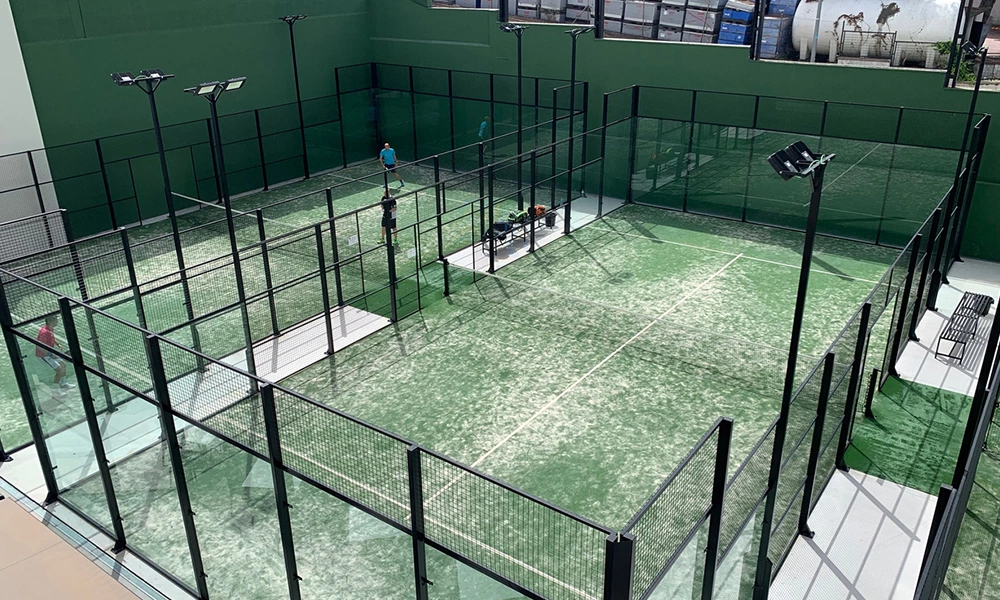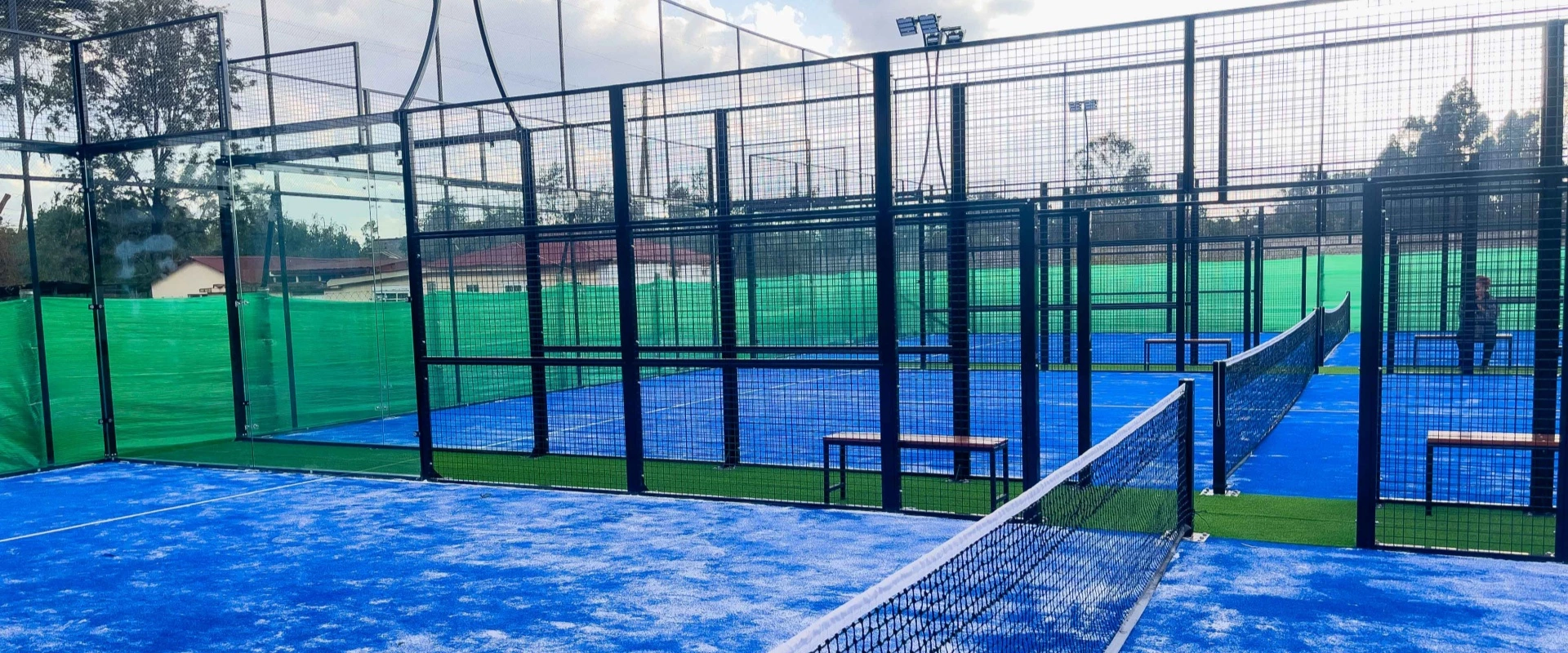Padel VS Tennis : Differences Between Tennis Sports
What is tennis?
Tennis is a ball sport played on a rectangular court, usually between two or four players. During the game, players use rackets to hit the tennis ball so that it passes over the net in the middle and lands in the opponent's court. Tennis is known for its high intensity and skills and is loved by people all over the world.
The birthplace of tennis can be traced back to France in the 12th century, when the game was called "jeu de paume", which means "palm game". Initially, players hit the ball with the palm of their hands, and later gradually evolved to use simple rackets. By the 19th century, the rules and forms of modern tennis gradually took shape, and Wimbledon in Wales, England, became one of the birthplaces of this sport. In 1877, the holding of the Wimbledon Tennis Championships marked the official birth of modern tennis. Today, tennis has developed into one of the most popular sports in the world, with many international events and professional leagues.
What is padel tennis?
Padel is an indoor or outdoor sport that combines elements of tennis and squash, and is usually played by two teams of two players. It is played in an enclosed court surrounded by glass walls and fences that players can use to bounce the ball.
The origins of padel can be traced back to 1969, when it was first invented in Mexico by a man named Alfredo H. Padel. He wanted to create a sport that could be enjoyed by family and friends, so he designed this easy-to-play ball game. Subsequently, padel quickly became popular in countries such as Spain and Argentina, and gradually developed into a popular competitive sport. Today, padel attracts a large number of enthusiasts and professional players around the world, especially in Europe and South America.
What is the difference between a padel court and a tennis court?
Different Court Sizes
Padel court dimensions is 20 meters long and 10 meters wide, while a tennis court dimensions is larger, 23.77 meters long and 10.97 meters wide.

Different Racket Sizes
Racket size is another major difference, with padel rackets being shorter, 45 cm long and 26 cm wide, and stringless, while tennis rackets are larger, 69 cm long and 47 cm wide, and have strings.

Different Ball Sizes
Ball size also varies, with padel balls ranging in diameter from 6.35 to 6.77 cm, slightly smaller than tennis balls (6.54 to 6.86 cm).

Different Court Net Sizes
The height of the net on a padel court is 88 cm, slightly lower than the 91.3 cm height of a tennis court.

In general, padel is suited to smaller courts and a more compact style of play, while tennis courts and equipment are larger and the tempo is relatively fast.
What are the differences in game rules between padel and tennis?
Although both padel and tennis are racket sports, there are significant differences in how they are played, in their rules and in the design of the courts.
Court Size and Design
Padel courts are significantly smaller than tennis courts, only about half the size of a tennis court. Padel courts are surrounded by glass and metal mesh walls, which are part of the game and allow the ball to continue to be effective after hitting the walls, while tennis courts are open and do not have such walls.
Serving Rules
In padel, the serve is an underhand serve, where the ball must be hit below the waist, and the ball hits the ground before being served to the opponent's serving area. In tennis, the serve is usually an overhand serve, which allows players to hit the ball hard, creating greater speed and angle changes.
Hitting and Strategy
Padel's hitting speed is slower than tennis, and the game focuses more on the players' reaction speed and tactical coordination, especially using the rebound of the court walls to hit tricky angles. In tennis, players usually rely on strength and speed to gain an advantage, and powerful forehand and backhand shots are an important part of the game.
Scoring system
Both sports use the same scoring system (0, 15, 30, 40), but padel is slower, the ball is easier to keep in rounds, and long rounds occur frequently. In tennis, due to the open court and fast ball speed, rounds are often shorter and rely more on precision and strength.
Tennis matches are played using a set and games structure, with each set usually consisting of 6 games, usually played in a best of 3 or 5 format. Scoring is done by 15, 30, 40, and then the winning game. A tiebreaker is used to decide close sets.
Scoring in padel tennis is similar to tennis, also using a set and games structure, usually played in a best of 3 format. In some tournaments, a single set of 9 games is also used.
Mainly doubles
Padel matches are almost always doubles, while tennis has singles and doubles. The tacit cooperation between players in padel is crucial, while singles in tennis focuses more on individual strength and strategy.
In general, padel is a slower and more tactical sport that emphasizes teamwork and the clever use of walls; while tennis focuses more on individual skills, strength and quick reactions.

What are the differences between the physical demands of padel and tennis?
Tennis requires players to have strong endurance and high-intensity sprinting ability, with a wide range of motion and an emphasis on individual performance. Players need to frequently change direction and move long distances, so tennis pays more attention to personal physical fitness and stress resistance.
Comparatively speaking, padel tennis has a smaller court and focuses more on quick reactions and short-distance flexible movements. Although the coverage area is smaller, players need to maintain a continuous competitive state, emphasizing agility and hand-eye coordination. This makes padel tennis suitable for participants of all fitness levels, and the social atmosphere is more friendly and inclusive.
What are the differences between the social aspects of padel and tennis?
Socially, tennis can be played in singles or doubles and is often seen as a more competitive sport. Padel, on the other hand, is played primarily in doubles, promoting teamwork and social interaction, with many players forming strong friendships in the process.
Sports choices for different players: padel tennis vs tennis
Both padel tennis and traditional tennis bring unique experiences to racket sports enthusiasts. The charm of padel tennis is that it is easier to get started, has a faster pace, and adds tactical changes through wall rebounds, which is especially suitable for players who like social interaction and teamwork. In contrast, tennis emphasizes technical depth and physical challenges, and is an ideal choice for those who pursue power, control and personality competition.
The key to choosing which sport is what you want to get out of it. If you want to get involved quickly, get started easily and enjoy interacting with friends, padel tennis is undoubtedly a better choice. If you are eager to immerse yourself in the competitive atmosphere of technical confrontation and personal breakthroughs, traditional tennis will better meet your expectations. No matter which one you choose, passion and fun will accompany every swing.




